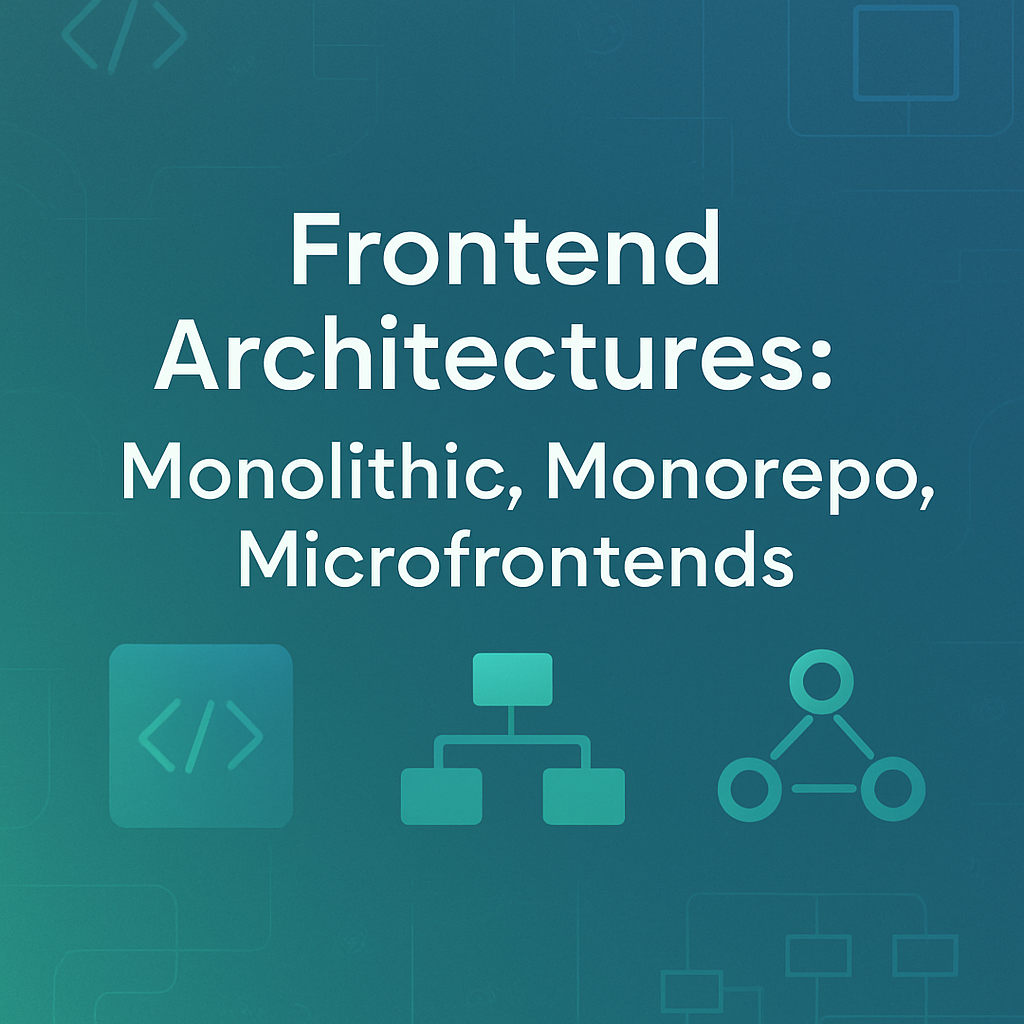Monolithic, Monorepo & Microfrontends.
September 9th 2025 | 2 min read
271 | 42

Hello Everyone,
Welcome back to my blog 🙏 .
I hope you are all safe and that this blog finds you in good health ️🫶.
Differentiating Monolithic, Monorepo, and Microfrontends Architectures
Frontend architectures have significantly evolved to address challenges of scalability, maintainability, and developer autonomy in modern web applications. As a seasoned developer, understanding the distinctions and practical implications of monolithic, monorepo, and microfrontend architectures is crucial for designing robust systems. Here’s an in-depth breakdown:
Monolithic Architecture
What is Monolithic?
- The monolithic architecture involves bundling all frontend code into a single, tightly coupled unit.
- All features, styles, and assets sit together and are deployed as one application.
Pros
- Simplicity: Straightforward to develop, test, and deploy for small or medium apps.
- Centralisation: Easier tracking of changes since everything is in one place.
Cons
- Scalability Issues: As apps grow, builds and deployments can get slow and bug-prone.
- Deployability: Even minor changes require redeploying the whole app, risking downtime.
- Team Bottlenecks: Larger teams may struggle because every developer affects the entire codebase.
Monorepo Architecture
What is Monorepo?
- In a monorepo, code for multiple projects (which may be related or entirely distinct) resides within a single repository.
- Projects within the monorepo have separate lifecycles and can be managed independently, but utilize shared tools, dependencies, and collaboration workflows.
Pros
- Centralised Code Management: Enforces consistent coding standards.
- Simplified Dependencies: Shared libraries reduce duplication and dependency conflicts.
- Improved Collaboration: Teams coordinate easily and propagate changes across projects with seamless efficiency.
- Popular With Tech Giants: Google, Facebook, and others organise their vast codebases with monorepos
Cons
- Build Complexity: As the codebase grows, build and test processes can slow down dramatically.
- PR Noise: Too many collaborators and open pull requests can create confusion.
- Tooling Investments: Requires advanced tooling (such as Nx or Lerna) to maintain efficiency.
Microfrontend Architecture
What is Microfrontend?
- Microfrontend architecture extends microservices principles to the UI layer, breaking the frontend into modular, independently deployable pieces.
- Each microfrontend is developed, tested, and deployed by potentially different teams, possibly using distinct technologies
Pros
- Decentralised Development: Enables teams to work on separate features without interfering with each other.
- Technology Diversity: Each module can use the tech best suited for its purpose.
- Independent Deployment: Allows risk-free, incremental updates; rollbacks affect only the targeted component.
- Scalability & Team Autonomy: Perfect for large, complex apps with many squads.
Cons
- Integration Complexity: Coordinating shared libraries and ensuring smooth user experiences can be challenging.
- Resource Intensive: Requires investments in infrastructure and developer expertise. Not ideal for small teams.
Practical Differences & Use Cases

Real-World Examples
- Monolithic: Early-stage startups, legacy enterprise dashboards.
- Monorepo: Google (Gmail/YouTube), Facebook, Twitter, Uber, Netflix.
- Microfrontends: E-commerce sites with independent checkout, product, and profile teams; streaming platforms; large SaaS dashboards.
Hybrid Approaches
- Monorepo + Microfrontends: Many enterprises manage microfrontends in a monorepo for sharing libraries and infrastructure, but keep deployment independent for each module. Eases collaboration while retaining autonomy.
Conclusion
- Monolithic—simplicity at the cost of scalability.
- Monorepo—collaboration and sharing, with tooling demands.
- Microfrontends—ultimate modularity for large teams, but with integration complexity
Here we go, That’s it folks for this blog.
I hope everyone liked this blog.
If yes, please share it with your friend.
For more exciting frontend content please follow me.
Let’s Learn, Explore and Excel together :)
Thanks a lot, Everyone 🙏.
Until Next time,
Happy Learning 📖✍️.
Abhishek Kovuri, UI developer
